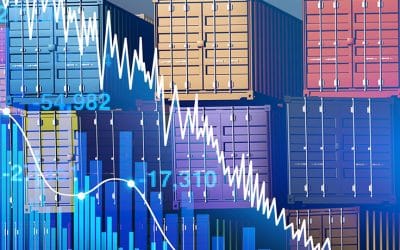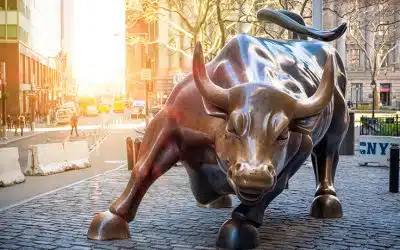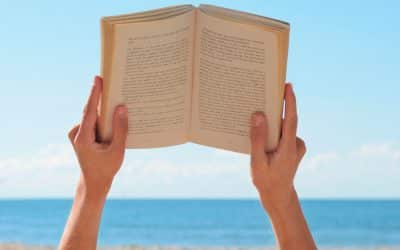“In times of high volatility, following the market is a mistake”

Redacción Mapfre
As part of our “MAPFRE AM Interview of the Month” section, we’ll be speaking with Javier Miralles, manager of the company’s equity portfolio and its Fondmapfre Bolsa Iberia fund. He’s going to tell us about the strategy being applied for that fund, its major components, and its emphasis on ESG criteria. In his opinion, it’s not a good idea to try to follow the market during times of high volatility. Instead, it’s better to “ride out the storm, look for good ideas, select the right securities, and build a solid model portfolio.”

- Tell us a little about your professional background, from the time you first arrived at MAPFRE AM, and your day-to-day work at the company.
I arrived at MAPFRE AM in April of 2014, so I’ve been here for nine years. Before that I was working at one of the MAPFRE Group’s other subsidiaries, where I met José Luis Fernandez Llorens, who at that time was one of MAPFRE’s senior managers and a board member at that other company. Thanks to him, I had an opportunity to become a candidate for the job position of equity portfolio manager for Spain. After I was hired, I started out with a supporting role in the department. Back then I had very little experience with the markets, but I was lucky to be part of a team where my previous boss, Fernando Santos, and another colleague, Pilar Pastor, had more than 25 years of experience. As time went by I learned more and more, and now I’m managing MAPFRE’s Iberian fund. I really owe a lot to Pilar and Fernando.
Now, with regard to my daily activities, they mainly revolve around building and managing a model portfolio. That’s the short answer, but it’s actually much more complicated. I have to follow all of the publicly traded companies from within the investment universe (Spain and Portugal), then decide which ones are suitable to include in the portfolio, and how much weight I should give to each one. To do this, I have to analyze the companies, study their numbers, meet with their executives, and visit their facilities. I also have discussions with other analysts about their financial aspects, and other aspects too... I think it’s the best job in the world.
- Let’s talk about the fund you manage. How is it evolved over time, and how has it performed during these years with such high volatility.
The Fondmapfre Bolsa Iberia fund has been around for many years, but at the same time, it’s also new. We could say that it’s in a process of transformation. As an investment vehicle, it started out with a more traditional, passive management philosophy, but during the last few years we’ve been transforming it into a mutual fund with fully active management, and I’m also trying to give it a sustainable profile. However, this doesn’t mean that it’s a sustainable mutual fund. Currently, it’s still classified as what is known in the business as an “Article 6,” or a traditional mutual fund. However, it’s undeniable that I feel very comfortable applying a focus on sustainability during my analysis, so I’m trying to incorporate some particular investment ideas and, who knows... maybe someday (sooner or later), we’ll be able to classify it as a fund that promotes social and environmental aspects.
In terms of the fund’s performance, there have been some rough times. But everyone has been having some of those. It hasn’t been easy trying to carry out a process of change and modernization during years with historically high levels of volatility. In general terms, it’s a fund that until just a few months ago was beating its benchmark index in all periods. However, over the last few months its relative performance has not been great, because although financial securities and purely cyclical ones have been doing quite well, we felt more comfortable in other sectors. We also have to remember that the profile of those who invest through an insurance company tends to be rather cautious, even for an equity product.
In any event, there’s something else that we also need to keep in mind: products of this type have a very long-term outlook, and based on that understanding, we’re very optimistic about the future. After the changes we’ve made, we now feel very comfortable with the model portfolio, and we’re expecting that the results will become apparent over the medium term.
- What are the fund’s major components, and what does it specifically include?
Well, I don’t like to mention specific names. And in addition, the major components are being rotated. But in general, I feel most comfortable with forms of business that are easy to understand, with clean balance sheets (this doesn’t necessarily mean debt-free, but the debt that exists needs to be supported by very secure and visible cash flows), and with management that is accessible, transparent, and reliable.
In terms of the fund’s composition, it could be said that it consists of quality ideas, with multiples that are not cheap, but that give the fund a defensive, high-quality profile. These are then balanced out by another group of companies that do trade at lower prices. These don’t have the same quality as far as return on capital, or in terms of competitive advantages or their operations, but nevertheless, they have very high revaluation potential.
We are rebalancing the quality/potential binary based on which cyclical period we think the companies are in, along with the macro momentum and the opportunities the companies are giving us. There are various factors involved.
- You are very specialized in investments with ESG criteria. How are you integrating that approach into the way you’re managing the fund?
The analysis we perform takes ESG criteria into account, of course, but we also study the strategic fit that companies have in the area of sustainability, which is something different. In a regulatory setting such as the one existing in Europe, there’s no doubt that managing sustainability is essential. The regulatory boom we’re experiencing there, based on the ambition of channeling capital flows towards sustainability, is something we aren’t seeing in other parts of the world, so this is something we have to try to understand and integrate into our analytics.
For example, if a company is under the scope of the “Emission Trading System” (which penalizes companies for emitting CO2), then we need to study that, establish some parameters, and see which measures are being taken to mitigate its future effects. And if another company is under the scope of the EU taxonomy, then it’s also a very good idea to see which measures are being taken so that the company can qualify as environmentally sustainable, since this will have a very positive impact on its financing and on its growth profile.
I also want to emphasize that sustainability is not just a selling tool, so we can put a green label on a product. It’s another concept we have to integrate into our analytics, and one that if managed properly, can help generate value, especially for companies that are subject to regulations as demanding as those being applied in Europe.
- You say that you also visit companies to make sure that they’re actually complying with those commitments. How do you do this? Do the companies welcome those visits? How much weight do you give them in your analysis?
I’m fortunate to be managing a fund focused on the Iberian Peninsula, because it makes things easier. Spanish and Portuguese companies know the MAPFRE name, so they’re usually very welcoming. I typically contact them directly, or else through the external analysts we use, and they tend to be very agreeable. Over the years I’ve seen it all: construction firms, oil refineries, big textile factories, train manufacturers, auto parts, renewable energy, etc. I’ve gone to look at the facilities of almost all of the companies I have in the portfolio, and I’ve learned a lot. And not just by speaking directly with the top managers, because it’s also very interesting to talk to the technicians and workers, because they give you another perspective on things, and often more direct answers. This can be very helpful when the time comes to make decisions.
- Have you contributed to creating a methodology for measuring carbon footprints in the portfolios? If so, what does it consist of?
Yes, absolutely. A few months ago we introduced the methodology for measuring carbon footprints, and we publicly released the data for MAPFRE’s investment portfolio. However, our approach is one that can be applied to any investment product. You just have to define the universe of assets you want to include, then perform the calculation.
It consists of measuring the emissions that we can attribute to the assets we’re investing in. These are known as indirect or “scope 3” emissions, and the regulations require financial institutions to calculate these, given their relevance. The rationale is that if a company is generating emissions and you own part of that company’s capital (whether as equity or debt), then you have to accept those emissions as your own, based on your ownership percentage in terms of the total capital.
This is something that at first seems simple enough to calculate, provided you have the necessary data, but once you start applying the theoretical aspects for the various asset types, it gets more complicated. The regulations will have to continue to clarify where the focus should be placed, to converge upon the same calculation for everyone involved.
- It seems that the markets are recovering from the recent disturbances in the banking sector. What effects do you think they’ll have on the Spanish securities market?
Volatility has been the underlying theme during recent years, and it seems like this will continue, at least in the short term. Trying to understand the macro side, and performing your management on that basis, is a mistake. Recently we’ve seen some banks with serious problems, and others have been bailed out. It’s likely that the central banks still have some interest rate hikes in store for us, but the markets have already ruled out any decreases or deflationary scenarios given the restrictions on lending, which is in turn pushing us towards a potential recession that may be deeper than expected. On the other hand, the securities markets continue with their sharp upward trend...
In times of high volatility, trying to follow the market is a mistake. It’s better to ride out the storm, look for new ideas, select the right securities, and build a solid model portfolio, one that can help us outperform the market over the next five years.
I don’t have a crystal ball. If I did, I’d probably be somewhere else right now. I don’t know what the securities market is going to do, it depends upon thousands of factors, and many of them cannot be estimated or predicted. However, I’m optimistic about the securities we’ve selected to include in our portfolio, and I think that we’re going to see them bearing fruit over the medium term.
Hobbies: Golf, surfing, family.
Favorite food: My mom’s Russian salad (but nobody else’s).
Favorite city/country: That’s a trick question... There are so many places... But to be honest, the first place I thought of was Cantabria, in northern Spain (San Vicente de Barquera, where I like to go surfing, or Santillana del Mar, where I got married).
Favorite musical group: If I have to choose just one, then Adolfo Cabrales Mato (aka Fito), both when he was with his band Platero y Tú and with his current group Fito & Fitipaldis.



